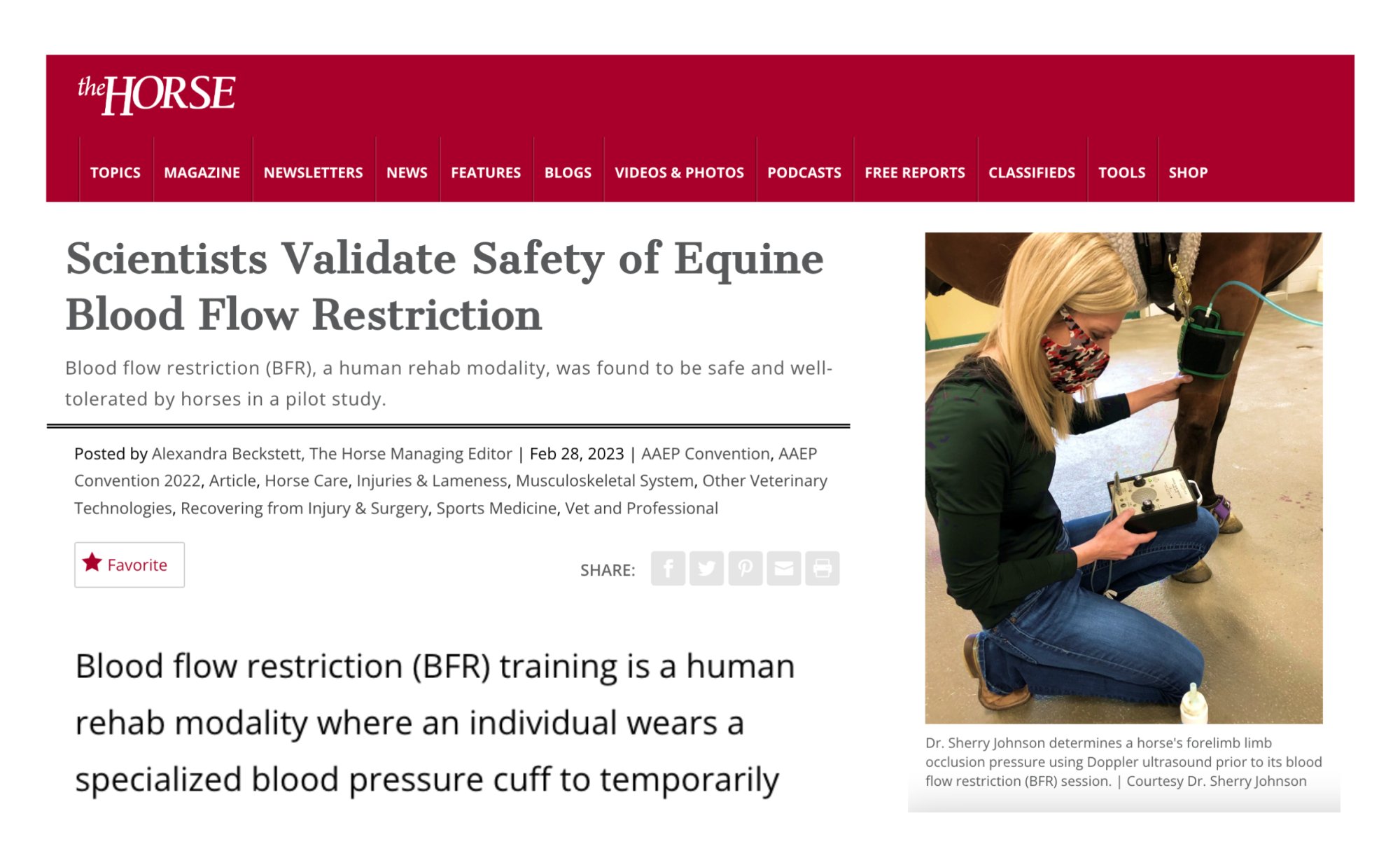Blood flow restriction (BFR) training is a human rehab modality where an individual wears a specialized blood pressure cuff to temporarily reduce blood flow to a limb while performing high-repetition, low-intensity exercise. Used as a bio-hack solution in both athletes and patients recovering from orthopedic injury, BFR leads to lactate accumulation believed to trigger beneficial increases in growth hormone. The goal is to increase muscle size and strength without applying damaging loads to a limb post-injury or -surgery.
While this technique is widely used in professional human athletes and geriatric populations, it hasn’t yet been adapted for horses—mainly because safety validation data has been lacking, specific limb occlusion pressure (LOP, the minimum pressure required to stop the flow of arterial blood into the limb distal to a tourniquet or cuff) values in horses are unknown, and no equine-specific BFR unit has existed for clinical veterinary use.
Sherry Johnson, DVM, Dipl. ACVSMR, PhD, and her colleagues at Colorado State University recently recruited human BFR experts from the University of Kentucky, Owens Recovery Science, and Delfi Medical Innovations Inc. to perform a pilot safety validation study in horses. Specifically, they sought to determine LOP values in the standing unsedated horse and evaluate whether BFR training had any negative effects on horses’ soundness. She presented their findings at the 2022 American Association of Equine Practitioners Convention, held Nov. 18-22 in San Antonio, Texas.
The study involved four horses that underwent daily blood flow restriction for 56 days. Researchers applied the cuff to one forelimb, and the opposing limb served as the control. Johnson and her team used Doppler ultrasound to determine LOP values at the walk with 80% vascular occlusion. They performed clinical exams and gait analyses at Days 0, 28, and 56 to assess whether long-term BFR use causes lameness and found it did not induce lameness or limb dysfunction. They also saw no evidence of dermatitis, thrombosis (blood clots), swelling, or other side effects.
In total, Johnson’s team took 160 LOP readings and noted significant differences in mean LOP values between horses and left and right forelimbs. She said their data suggest BFR pressures of 75-151 mm Hg (units of pressure) simulate 50-80% vascular occlusion.
“This study represents a huge first step in helping us determine patient-specific pressures for BFR use in horses,” said Johnson. “BFR has been so instrumental in human medicine that our equine team was highly motivated to see if existing human BFR technology would be safe and well-tolerated by our study horses, which in fact it was. We have a long way to go to continue to explore its use as a rehabilitative aid for use in horses, but this study suggests it is safe and definitely worth pursuing further.”
See more at the publication website.


